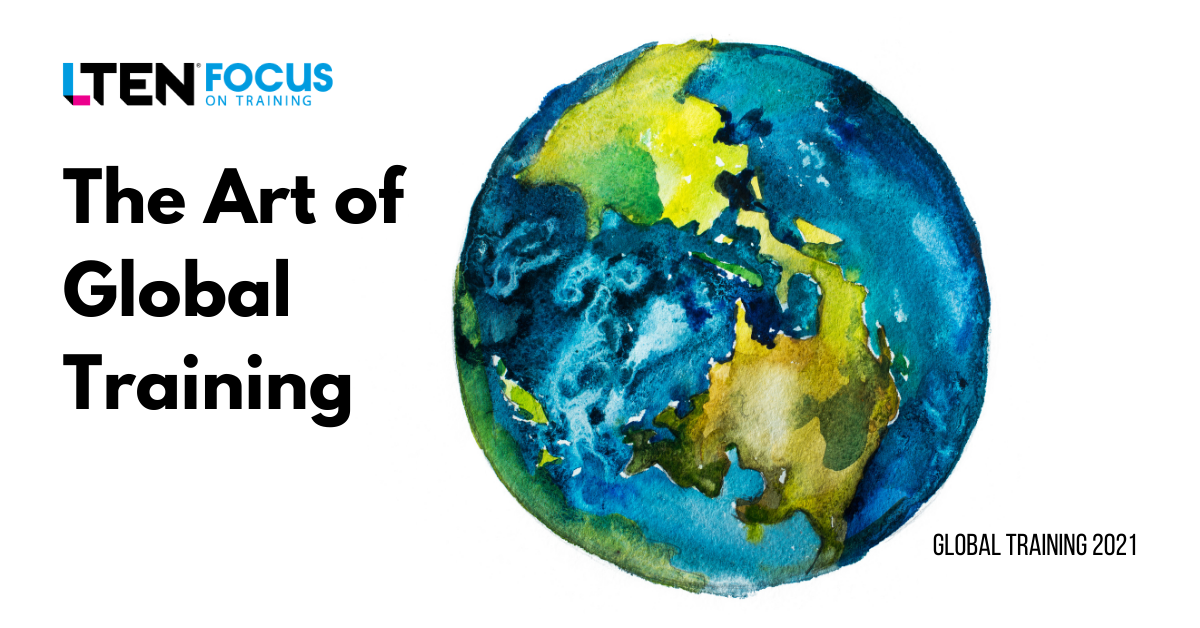
The Art of Global Training
Feature Story – By Eduardo Bryant
People everywhere are looking for the value in training
 The key to being a great trainer is to have confidence in yourself, know your subject and to practice a lot. For many, having to train a group of people, large or small, is a regular part of their job.
The key to being a great trainer is to have confidence in yourself, know your subject and to practice a lot. For many, having to train a group of people, large or small, is a regular part of their job.
So, how do we develop great trainers globally?
A well-delivered training session is the combination of two things: what is being trained and how it’s being trained. All too often, more emphases are placed on the content – what is being trained – rather than how.
No matter where they are, people are looking for the value in what you are training and how it can benefit their lives either professionally or personally. The power of how that training is delivered can make all the difference in the world.
Here are three key core competencies of being a great global trainer:
- Exude confidence
- Stage presence
- Deliver value
The Art of Global Training
There is an art to being a great global trainer. You must consider different cultural norms, such as when breaks are normally taken, starting and quitting times in different regions and the speed with which you speak due to possible language barriers.
Additionally, you need to know how to hold an audience’s attention, grab their attention right off the bat and use the right voice inflection. All are critical to delivering a powerful training session. Great trainers can move an audience in an emotional way that is oftentimes remembered for life.
Aside from language and cultural issues, everybody has their own style of training. Some people talk with their hands, some with their eyes, some use the power of silence and some have the right tone to their voice. There are those who can convey a message in 10 words while someone else may need 200 words to get the same point across. We all have our own unique training style, but how do we know if our style works in front of an international audience?
The old cliché, you never get a second chance to make a first impression, is true. It’s critical to set an exciting tone within the first five minutes of your session, so that your audience becomes interested in what you are training. This is important because people are busy. If they are willing to spend their precious time listening to you, they are expecting something of value in return.
Stage Presence
We refer to the way a person looks and moves on stage as their stage presence. Trainers sometimes get lost in the awkwardness of their session. Here are a few things to keep in mind when you are training:
- If you look awkward and uncomfortable, it will distract from your training.
- Starting with an attention grabber excites the audience for what’s to come.
- If you use a flip chart, have it filled out as much as possible.
- Knowing where to stand makes a difference.
- Try not to cross in front of the projector or screen.
- Avoiding pacing back and forth while looking down at the floor.
- Understand that body language communicates a message.
Top Tips for Great Global Training
If you follow these 10 guidelines, your training will be well received by your audience.
1. Start on Time – Don’t waste people’s time! Those who arrived on time deserve to have the program start when it’s scheduled; it’s not fair to make them wait.
Global Training Tip: Always confirm what the time difference will be on the day of the training. This type of mistake is embarrassing and can possibly cause disengagement.
2. Project Your Voice – There is nothing worse than a trainer you can’t hear or understand. Even if you are using a microphone, make sure you can be heard.
Global Training Tip: Be cognitive of the speed with which you speak and the clarity of your words. This is important because many in your audience may not speak your language as their first language.
3. Great Training Sessions are Delivered with a Hint of Storytelling – If your training is more than 30 minutes long, explain your content through short stories, quotes and anecdotes. Excellent trainers know just how to use a story to create an emotional connection.
Global Training Tip: Be aware of the type of stories you share so that you don’t commit any cultural errors.
4. There is a 10-20-30 Rule when it comes to PowerPoint presentations. Recognize that all presentations won’t fit this theory; however, this is the rule of thumb.
Global Training Tip: Research what is and isn’t acceptable as a room setup in different cultures. Have no more than 10 slides, make your presentation no more than 20 minutes and make your font no smaller than 30 point.
5. Entertaining – A great training session is both entertaining and informative. People expect some appeal to their emotions. Without passion and a little humor, people are less likely to give you their full attention.
Global Training Tip: What’s funny in one culture may be offensive to another. If in your training you have something that may be questionable, either run it by someone first or leave it out.
6. Don’t Tell the What; Tell the Why – Make sure you are answering the question of “why.” People want to know why they need your training and how it’s going to help them.
Global Training Tip: Frame the information as a suggestion of how you believe the training will help them. Depending on how information is presented, your message may not be received warmly.
7. Have Confidence – The audience should know that you are well prepared, passionate about what you are training and that they are going to learn something from you.
Global Training Tip: Avoid any impression of arrogance; this could cause some cultures to tune you out.
8. Use the Power of Silence – Use silence to let a point marinate in the room. Silence is a powerful tool when used right.
Global Training Tip: Some teammates in different regions may not speak a lot in training classes. Allow the silence to accent the point but don’t wait too long.
9. Be the Expert – You’re here to tell the audience what you know, which information matters the most and where they should focus their attention.
Global Training Tip: Be aware of how your own culture may be perceived by others and thus, maintain a humble spirit and allow your knowledge to speak.
10. End Early – You don’t want the last thing your audience to remember is that you talked longer than expected. That’s one of the worst things a trainer can do.
Global Training Tip: Be aware of quitting time in different regions and plan accordingly.
Nonverbal Communication
A critical piece to standing in front of a global audience and delivering a training course is the power of communicating nonverbally. Some cultures are more expressive with their mannerisms than others.
It has been said that our body language is responsible for about 55% of our communication, vocal is 38% and that we only communicate about 7% verbally.
Following the five nonverbal principles listed below can dramatically improve the effectiveness of your training.
- How you move – Moving can create a connection with your audience, especially when you are able to move among them. If you are confined to the stage, using the whole stage can increase intimacy with each side of the room.
- Your posture – Hold your head up, stand straight and keep your hands out of your pockets. Try not to turn your back to the audience while reading your slides off the screen. If you are in a seated position, sit up straight and try not to slouch.
- Facial expressions – It seems simple, but you have to smile and avoid frowning at a question/comment or rolling your eyes.
- Constant eye contact – It’s important to make eye contact with the whole audience. Avoid just looking at one section of the room or person. Keep your head up and constantly pan the audience.
- Hand movement – There is talking with your hands and then there is being distracting. Slight movement to accent a point is good, but avoid meaningless gesticulations.
It’s in you to be a dynamic, powerful global trainer. Use your inner drive to develop the skills needed to wow your audience the next time you are asked to run a training session.
Eduardo Bryant is chief architect strategist for EB Enterprises Consulting Group.
Email Eduardo at eduardo.bryant@ebntp.com.








